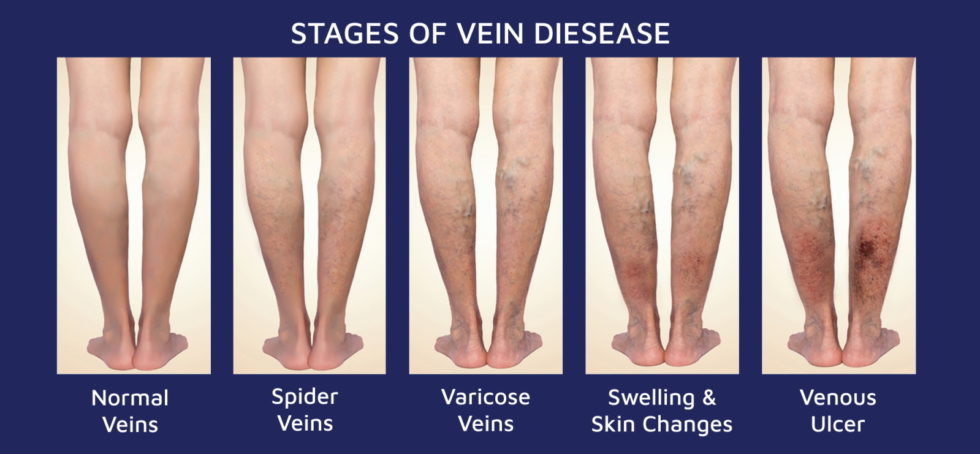Are My Leg Veins Affected by Drinking Alcohol?
Author: StrideCare Internal Team

Drinking and Leg Veins: How Alcohol Impacts Your Vein Health and Varicose Veins
Trish’s* family has a history of vein disease. Her grandmother had bulging varicose veins on her legs, and her mother and older sister did, too. In fact, Trish’s mom had ongoing leg discomfort and wore pants to keep them covered. As you can imagine, Trish worries about following down the same path. She knows heredity is a risk factor in developing pain in her leg veins. However, she is still in her 20s and focuses on what she can control—healthier eating habits and staying active. But one thing she didn’t think about was alcohol consumption, a lesser-known obstacle in the fight against vein disease. Trish loves drinking socially on the weekends. And with the holidays coming up, she doesn’t want to restrict her partying. But will drinking alcohol affect her leg veins?
Let’s be clear: drinking alcohol doesn’t directly cause varicose veins and other vein diseases. Family history, age, smoking, not exercising, excessive standing, obesity, and eating the wrong foods has more to do with this than anything else. It’s also OK to drink when done responsibly and not in excess—such as an occasional glass of wine or a cocktail. But it’s best for men and women with painful leg veins or predisposed to the condition to avoid alcohol consumption. Continuous drinking can affect your overall circulatory system and worsen symptoms.
Are You Experiencing These Vein Disease Symptoms?
- Painful varicose veins
- Tired, heavy legs
- Unexplained leg swelling
- Numbness and tingling
- Unsightly spider veins
- Cramping, achy legs
- Skin sensitivity (itching, tenderness, rashes)
- Pain that worsens after sitting or standing for long periods
- Leg ulcers
- Restless legs
- Burning sensations
- Leg skin discoloration
Drinking Alcohol and Vein Health
Veins serve a specific purpose of sending blood from the legs back up to the heart. Think of them as a sophisticated and interconnected network that repeats the same job over and over again. Veins support many systems critical to your cardiovascular health and other functions of blood. Most of us don’t give much thought to our veins. But as we age and make certain lifestyle choices that may be detrimental to our overall health, these veins can malfunction due to damage to the valves.
You may first notice subtle changes to your skin and leg veins, such as small and painless spider veins. Eventually, you notice large and bulging varicose veins. And in many cases, achiness, throbbing, and numbness sets in.
This condition and the myriad of symptoms that follow are only exacerbated by alcohol consumption.

Again, a beer here or a glass of wine there isn’t going to hurt you. The Centers for Disease Control and Prevention (CDC) classifies moderate drinking as 1 or fewer drinks each day for women and 2 or fewer drinks each day for men. And at least one study showed that low to moderate alcohol consumption is associated with a decreased risk of deep venous thrombosis and pulmonary embolism in older persons. But heavy and more consistent alcohol consumption can have the opposite effect on the body and leg veins, including:
Increase in heart rate
Drinking alcohol daily can make your heart beat really fast and out of rhythm. This can lead to blood clots, strokes, heart failure and other heart conditions. An excessive heart rate is also known to cause blood to pump through your veins faster, putting unnecessary pressure on weakened leg veins.
Liver issues
As your liver continues to filter out the toxins from alcohol, liver cells die. As a result, your liver can’t get rid of the toxins as efficiently as it used to. Your blood then becomes thicker, putting even more strain on your veins and circulatory system as the body tries to push that blood.
High blood pressure
Heavy drinking is defined as having more than 3 drinks a day for women, 4 for men. When you drink heavily, you can raise blood pressure to unhealthy levels. This elevated blood pressure damages the valves in vessels and permanently weakens leg veins.
Veins tighten and constrict
Vasodilation is a normal process performed by our bodies and can happen at any time. However, studies consistently show that the process increases in response to certain environmental situations. Heavy consumption of alcohol acts as a vasodilator at first in that it causes blood vessels to relax and expand. But at extreme levels, it causes veins to tighten and restrict.
Worsen existing leg veins symptoms
Heavy alcohol consumption makes leg veins symptoms such as swelling, heaviness, and tiredness worse. One study even said that there is an association between alcohol consumption and nocturnal leg cramps in patients over 60.
The reality is that vein disease is extremely common, affecting one out of every three Americans. And it worsens the longer it’s left untreated. Leg veins symptoms like the ones above progress from annoying to debilitating and dramatically impact your quality of life. At Stridecare, we want you to understand the importance of healthy veins and empower you to recognize the signs of vein disease—even in its earliest stages.

5 Ways to Take Care of Your Leg Veins
- Exercise — The American Heart Association recommends at least 150 minutes per week of moderate-intensity aerobic activity and to increase the amount and intensity of those exercises gradually over time. This improves blood flow throughout the body and promotes healthy veins.
- Eat better — Your diet helps maintain blood circulation, cardiovascular health, and the ability to lose weight. Options include vegetables, fruits, and fiber-rich foods.
- Compression socks — Compression socks apply gentle pressure to support your legs. This helps with circulation, swelling, and reduces painful legs during long work shifts, plane flights, and standing on your feet for a long time.
- Avoid tight clothing — Tight clothing around the waist, upper thighs, and legs can interrupt blood flow through the veins and increase pooling of blood and leg swelling.
- Avoid smoking — Smoking is the leading cause of preventable disease and death in the United States, including its direct impact on the formation of varicose veins and other venous diseases and complications.
If your leg veins need treatment, more than the above preventions, your vascular specialist may recommend minimally invasive treatments. Common procedures include radiofrequency ablation, microfoam ablation, or sclerotherapy.
Let StrideCare Help with Your Leg Veins
Healthy veins can be fleeting, though we realize it’s difficult to fathom that when you’re young. Maybe in your 20s, your legs felt great, and your skin was very smooth. But like anything else, healthy leg veins are constantly under pressure to do their job as we age. Various lifestyle changes impact their everyday functionality. Heavy alcohol consumption is just one example of an outside influence that can make your situation worse if you already have issues with your leg veins or are predisposed due to heredity and other factors.
Our expert vein doctors and highly skilled team members at StrideCare are proud to offer educational solutions and non-surgical procedures. We treat a variety of vein and artery diseases that can dramatically impact your quality of life. We only utilize the latest technologies and minimally invasive treatments. On top of that, our physicians are board-certified diagnostic radiologists with additional fellowship training in vascular and interventional radiology. That means we are the best at what we do!
If you have questions on treating your leg veins, the experts at StrideCare will recommend an individualized plan to help you get the best results.
Prior to starting any new treatment or questions regarding a medical condition, always seek the advice of your doctor or other qualified health provider. This information is not a substitute for professional medical advice.
StrideCare serves the South Texas area including Houston, San Antonio, Austin, Round Rock, Bastrop, Brushy Creek, Cedar Park, Converse, Georgetown, Hutto, Kyle, Leander, Marble Falls, New Braunfels, Pasadena, Pearland, Pflugerville, San Marcos, Schertz, Houston, Sugar Land, Katy, Webster, Bay City, Clear Lake, Lake Jackson, The Woodlands, Universal City, Spring, Kingwood, Stafford, Conroe, Texas City, Cypress, League City, Bellaire, and more.
*Patient stories are true. Names and/or photos may be changed to protect patient confidentiality.


